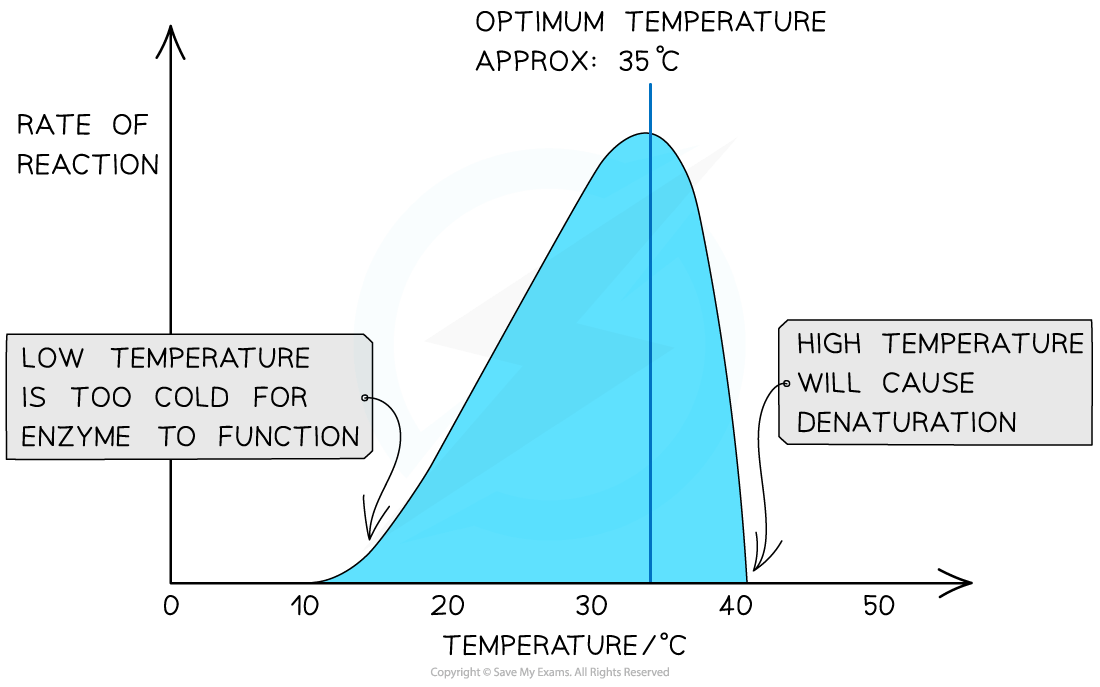Rate: Temperature (Cambridge (CIE) AS Biology): Revision Note
Exam code: 9700
Rate: temperature
Enzymes have a specific optimum temperature
This is the temperature at which they catalyse a reaction at the maximum rate
Lower temperatures either prevent reactions from proceeding or slow them down this is because:
Molecules move relatively slowly at lower temperatures
Therefore there is a lower frequency of successful collisions that occur between substrate molecules and the active site of the enzyme
So there are less frequent enzyme-substrate complexes formed
Substrates and enzymes collide with less energy, making it less likely for bonds to be formed or broken (stopping the reaction from occurring)
Higher temperatures speed up reactions this is because:
Molecules move more quickly at higher temperatures
Which results in higher frequency of successful collisions between substrate molecules and the active sites of enzymes
So there are more frequent enzyme-substrate complexes formed
Substrates and enzymes collide with more energy, making it more likely for bonds to be formed or broken (allowing the reaction to occur)
However, as temperatures continue to increase, the rate at which an enzyme catalyses a reaction drops sharply, as the enzyme begins to denature:
Bonds (e.g. hydrogen bonds) holding the enzyme molecule in its precise shape start to break
This causes the tertiary structure of the protein (i.e. the enzyme) to change
This permanently damages the active site, preventing the substrate from binding
Denaturation has occurred if the substrate can no longer bind
Very few human enzymes can function at temperatures above 50°C
This is because humans maintain a body temperature of about 37°C, therefore even temperatures exceeding 40°C will cause the denaturation of enzymes

Examiner Tips and Tricks
When answering questions about reaction rates for enzyme-catalysed reactions, make sure to explain how the temperature affects the speed at which the molecules (enzymes and substrates) are moving and how this, in turn, affects the number of successful collisions.

Unlock more, it's free!
Did this page help you?